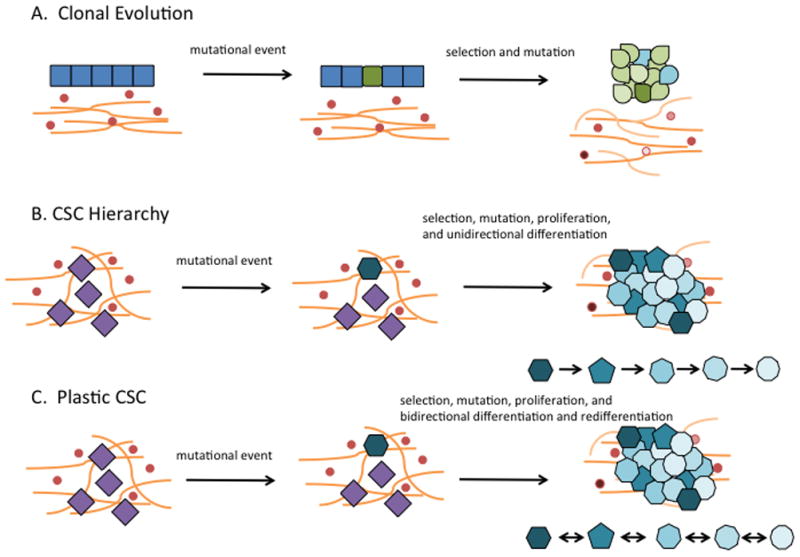Figure 3.

Tumor Heterogeneity. At present, the development of tumor heterogeneity may be three mechanisms. While depicted singly, some aspects of each may overlap. A. Clonal evolution. Accumulation of sufficient mutations in a differentiated epithelial cell (green) brings uncontrolled growth. Continuation of this mutational process may be aided by genomic instability while selection pressure for survival occurs. Different clones result (variable shades of green and blue). B. CSC hierarchy. CSCs are expected to reside in a niche reflecting their origin, the normal adult tissue stem cell. If this is true, then abnormal self-renewal (hexagonal blue cell) leads to differentiation of the CSC which then comprises the bulk of the tumor and is nontumorigenic. C. Plastic CSC. CSCs may derive from normal adult tissue cells (hexagonal blue cell), but as they divide and differentiate, it is also possible that subsequent progenitor cells may reacquire a more “stem-like” phenotype. This plasticity could explain tumor heterogeneity. The reversion from a differentiated CSC back to a more “stem-like” phenotype may result from environmental cues or therapy.
